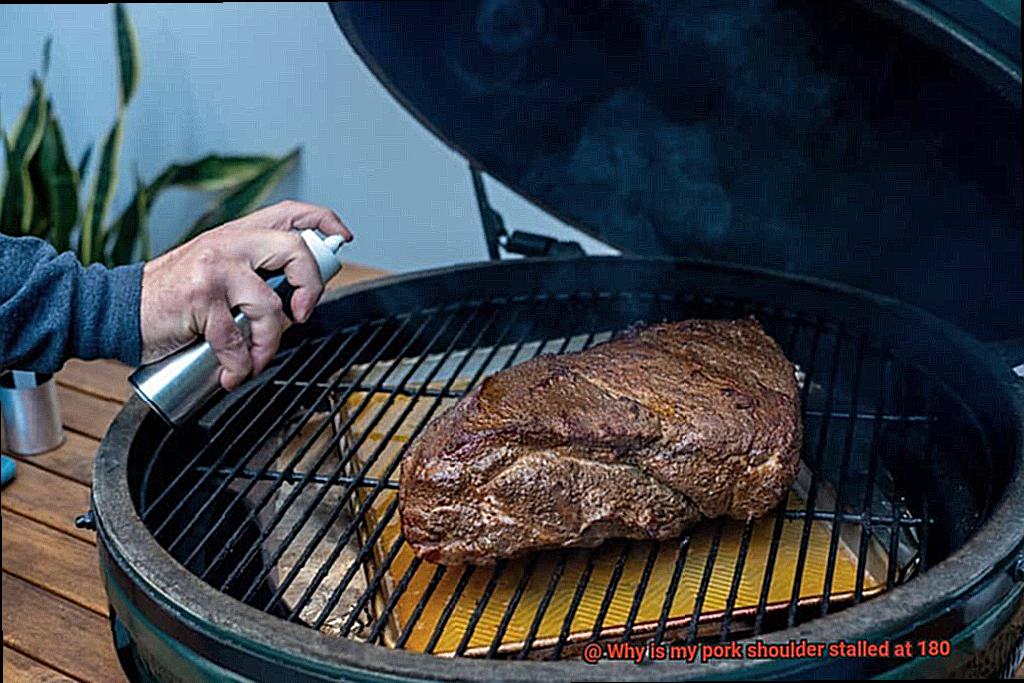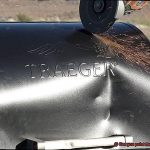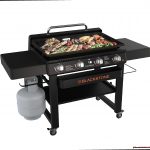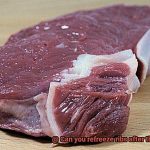Are you feeling the anticipation build as your pork shoulder slowly roasts in the oven? But wait, why is it taking so long to cook? You glance at your thermometer and notice that the temperature has been stuck at 180°F for what seems like an eternity. Don’t worry, you’re not alone in this frustrating situation.
In this blog post, we’ll delve into the science behind the notorious pork shoulder stall and provide some helpful tips to overcome it. Patience is key when cooking any meat, especially a pork shoulder, and we’ll explain why rushing it can lead to less-than-ideal results.
We’ll also explore the role of collagen in creating a tender and juicy final product, and how “low and slow” cooking techniques can make all the difference. Plus, we’ve got some insider tricks up our sleeves to help you navigate this culinary challenge with ease.
So grab your favorite beverage and get ready to become a pork shoulder expert. By the end of this article, you’ll be equipped with all the knowledge you need to create a mouth-watering masterpiece every time.
Contents
What is the Stall at 180°F?
When it comes to cooking pork shoulder, many home cooks have encountered the mysterious “stall” at 180°F. This phenomenon occurs when the internal temperature of the meat reaches around 180°F and then remains there for an extended period of time, sometimes for hours. However, instead of being frustrated by the stall, it is important to understand why it occurs and how to overcome it for a delicious and tender final product.
The stall is caused by evaporative cooling. As heat is applied to the pork shoulder, moisture is released from the meat and evaporates into the air. This evaporation process cools the meat, which can cause the internal temperature to plateau at around 180°F. Although this may seem like a setback, the stall is actually an essential part of cooking pork shoulder as it allows connective tissue within the meat to break down, resulting in a more tender and flavorful final product.
So how can you overcome the stall? There are a few methods to try. Firstly, you can simply be patient and wait it out while maintaining a steady temperature. Eventually, the meat will continue to cook and reach its desired level of doneness. Alternatively, wrapping the pork shoulder in foil or butcher paper can help trap moisture and prevent further evaporation. This method can speed up the cooking process and reduce the amount of time spent in the stall.
Another option is to raise the temperature slightly on your grill or smoker to help push through the stall. However, it is important to note that this method may result in a slightly different texture or tenderness than if you were to wait it out or use wrapping.
It is crucial to understand that the stall is a natural part of cooking pork shoulder and does not necessarily mean that your meat is undercooked or unsafe to eat. As long as you have reached a safe internal temperature of 145°F, your pork shoulder is safe to consume. However, if you are looking for a specific texture or tenderness, it may be necessary to push through the stall to reach your desired internal temperature.
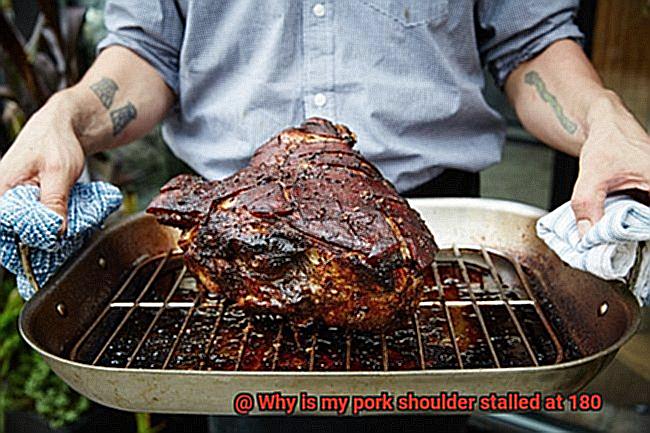
Causes of the Stall
Picture this: you’ve been cooking a pork shoulder for hours and suddenly, the temperature stops rising. You’re in the middle of the dreaded stall. But fear not. The stall is actually an essential part of the cooking process and can lead to a tender and juicy final product. Let’s explore the causes of the stall and how to overcome it.
Collagen breakdown is one of the main culprits behind the stall. As the temperature increases, collagen in the meat begins to break down and transform into gelatin. This conversion takes time, causing the temperature to plateau.
Evaporative cooling also plays a role in the stall. As moisture evaporates from the surface of your pork shoulder, it cools the meat, slowing down or even halting the cooking process. To combat this, try wrapping your meat in foil or butcher paper to trap in moisture and prevent or shorten the stall.
Size and shape are also factors to consider. A larger or thicker cut of meat will take longer to cook and may experience a longer stall. Additionally, unevenly shaped cuts with thicker areas may cause a longer stall.
External factors such as wind or cooler ambient temperatures can contribute to the stall as well. Wind can increase evaporative cooling, while cooler temperatures slow down cooking altogether.
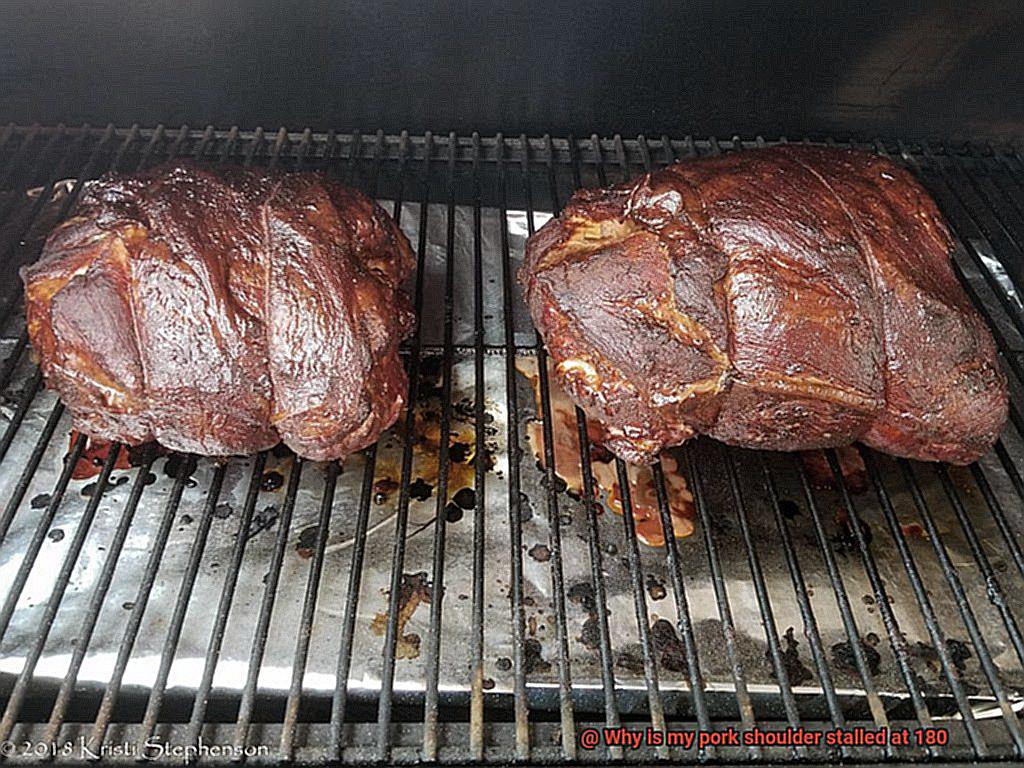
Overcoming the Stall
Smoking a pork shoulder is an adventure that requires skill, patience, and a little bit of luck. One of the biggest obstacles that can test even the most experienced pitmasters is the notorious stall. This occurs when the internal temperature of the meat reaches around 180 degrees Fahrenheit, and then stubbornly refuses to budge. But don’t throw in the towel just yet. As an expert on overcoming the stall, I’m here to share some tips and tricks to help you push through this hurdle and achieve perfectly cooked pork.
Let’s start with the basics: why does the stall happen? The stall happens when the moisture in the meat begins to evaporate, causing the internal temperature of the pork shoulder to plateau. A variety of factors can contribute to this phenomenon, such as humidity, smoker type, and the size of the meat.
The good news is that there are several ways to overcome this pesky problem. One popular method is to wrap your pork shoulder in foil or butcher paper. This technique, known as the “Texas Crutch,” helps trap moisture and heat in the meat, allowing it to continue cooking without getting stuck in the stall. To add extra flavor and moisture, some people also include a liquid such as apple juice or beer in their foil or paper wrap.
Another way to break through the stall is by increasing the temperature of your smoker. However, be cautious not to crank up the heat too high, as this can dry out and toughen up the exterior of your pork shoulder. It’s essential to maintain a gentle and consistent heat level throughout your cooking process.
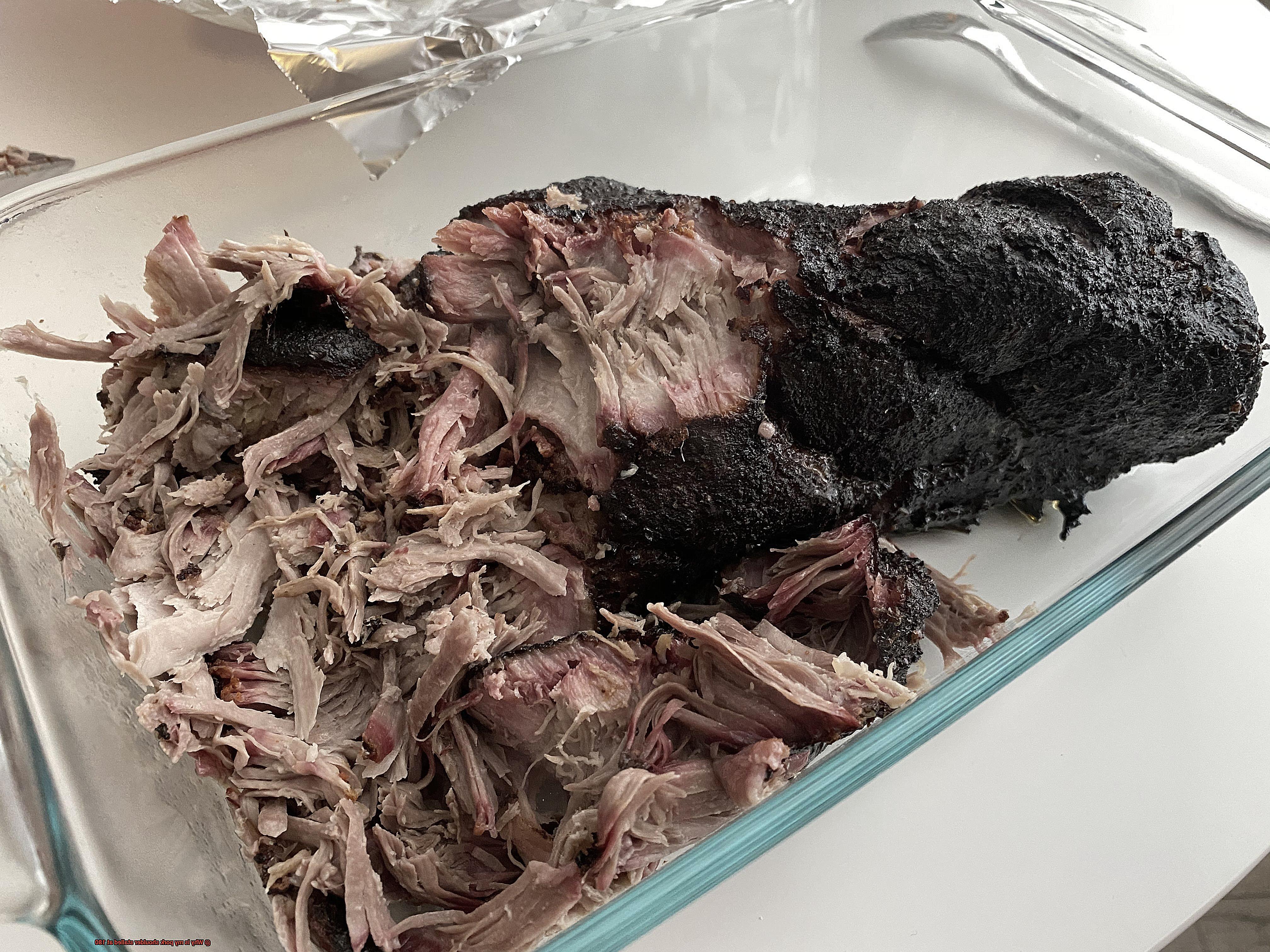
Finally, patience is key when it comes to overcoming the stall. Don’t rush the cooking process – let your pork shoulder reach its desired temperature slowly but surely. This will ensure that your meat is tender, juicy, and bursting with flavor.
To recap, here are some essential tips on how to overcome the stall:
- Wrap your pork shoulder in foil or butcher paper to trap moisture and heat
- Add a liquid such as apple juice or beer to your wrap for an extra burst of flavor and moisture
- Increase the temperature of your smoker, but don’t go too high
- Be patient and let your pork shoulder reach its desired temperature slowly
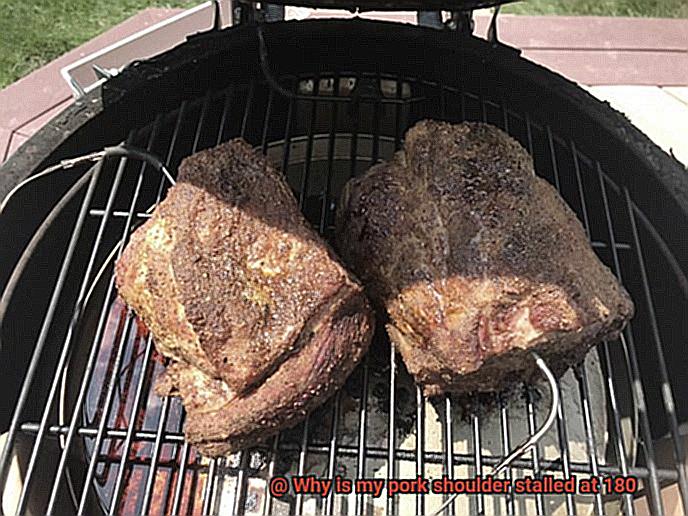
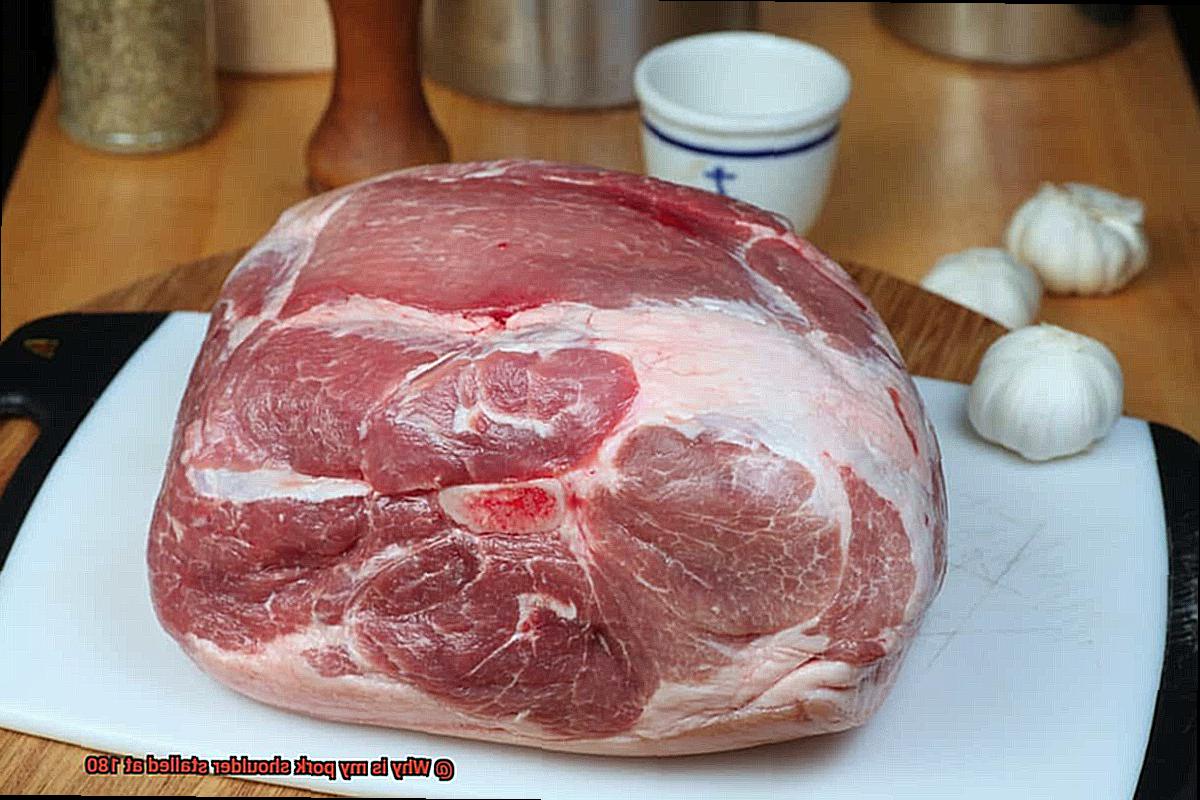
Is the Pork Shoulder Still Safe to Eat?
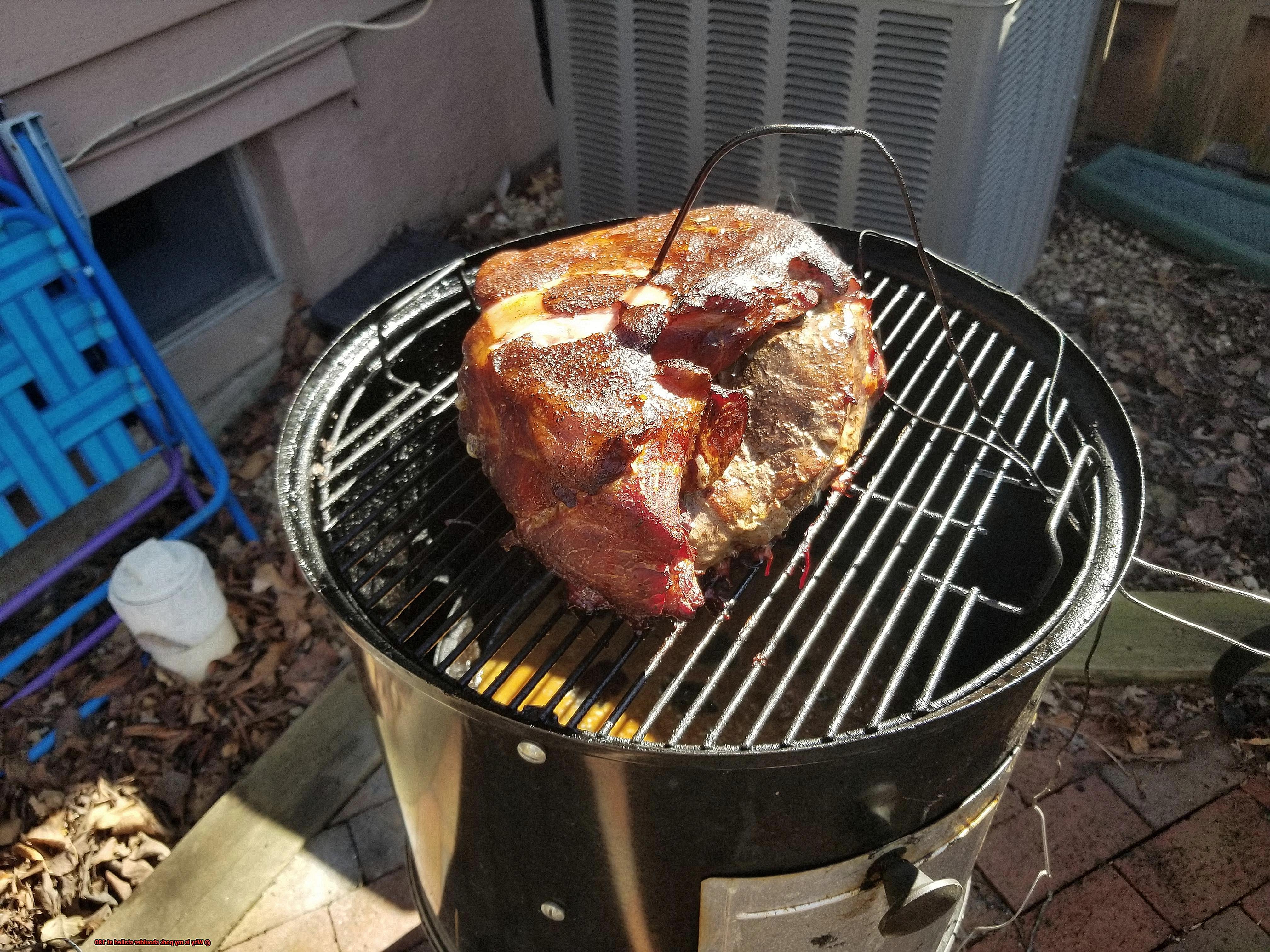
Take a deep breath and relax. As an expert in this field, I can assure you that there’s no need to worry about the safety of your pork shoulder. Let me walk you through some crucial points that will put your mind at ease.
First and foremost, it’s essential to cook pork shoulder thoroughly to avoid any potential health hazards. However, if your pork shoulder has stalled at 180 degrees Fahrenheit, there’s no need to panic. The good news is that the meat is still safe to eat as long as it reaches a temperature of at least 145 degrees Fahrenheit. This is the minimum temperature recommended by the USDA for pork to be considered safe for consumption.
But guess what? There’s more. While the meat may be safe to eat at 145 degrees Fahrenheit, it may not be as tender and juicy as desired if it has stalled at 180 degrees Fahrenheit for an extended period. To ensure that your pork shoulder is both safe and utterly delicious, it’s recommended to continue cooking it until it reaches an internal temperature of at least 195 degrees Fahrenheit. This will allow the connective tissue and fat in the meat to break down, resulting in a mouth-watering finished product.
In summary, here are three things to keep in mind when cooking pork shoulder:
Cook pork shoulder thoroughly to avoid potential health hazards.
Your pork shoulder is still safe to eat as long as it reaches a temperature of at least 145 degrees Fahrenheit.
For optimal taste and texture, continue cooking the meat until it reaches an internal temperature of at least 195 degrees Fahrenheit.
Tips for Avoiding a Stall in the Future
Pork shoulder is a popular and delicious cut of meat, but it can be frustrating when a stall occurs during cooking. A stall happens when the internal temperature of the meat plateaus and can last for hours. But don’t worry, with these tips, you can avoid a stall and cook your pork shoulder to perfection.
Bring the Meat to Room Temperature
One of the best tips for avoiding a stall is to bring your pork shoulder to room temperature before cooking. This will help it cook more evenly and prevent any cold spots that could lead to a stall. To do this, take the meat out of the refrigerator at least an hour before cooking.
Wrap the Meat in Foil or Butcher Paper
Once your pork shoulder reaches an internal temperature of around 160-170 degrees Fahrenheit, wrap it in foil or butcher paper. This will help keep the meat moist and prevent it from drying out during the rest of the cooking process. The foil or paper will also help to regulate the temperature inside the meat, preventing a stall.
Increase the Temperature
If you experience a stall during cooking, try increasing the cooking temperature slightly. This can help break through any stalls and get your meat up to its desired internal temperature more quickly. However, be careful not to raise the temperature too much as this can cause the meat to dry out.
Use a Marinade or Rub
Using a marinade or rub that helps to keep the meat moist during the cooking process is another way to avoid a stall. A combination of salt, sugar, and other spices can create a crust on the outside of the meat while keeping it juicy on the inside. Be sure to apply the rub or marinade evenly and let it sit for at least an hour before cooking.
Avoid Opening the Grill or Smoker Too Often
Opening the grill or smoker too often during the cooking process can cause fluctuations in temperature and lead to a stall. Instead, try to maintain a steady temperature and only check on the meat when necessary. If you need to add more wood chips or charcoal, do it quickly and efficiently to minimize any temperature fluctuations.
The Benefits of Wrapping in Foil or Butcher Paper
Smoking a pork shoulder is an art form that requires patience and skill. However, it’s not uncommon to experience a frustrating stall in the cooking process, leaving you wondering if your meat will ever reach its desired internal temperature. Thankfully, wrapping your pork shoulder in either foil or butcher paper can help overcome this obstacle and produce a tender and juicy final product.
Wrapping your pork shoulder in foil or butcher paper creates a barrier that traps steam and helps to retain moisture and heat. This prevents the meat from drying out and speeds up the cooking process by reducing smoking time. The result is deliciously moist meat that falls off the bone.
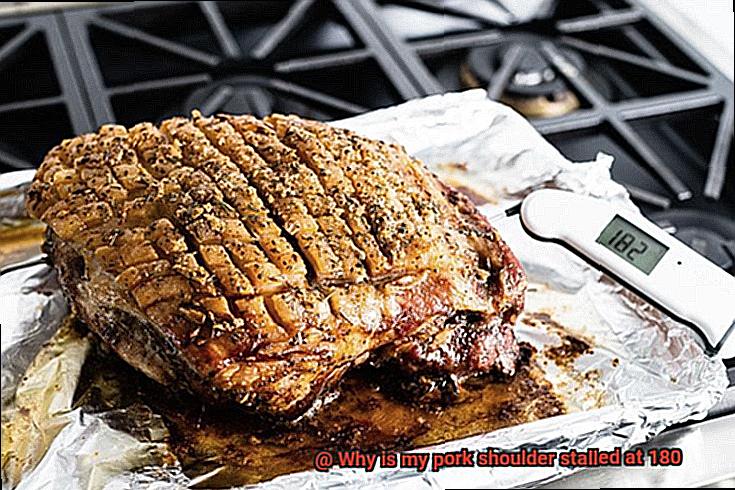
But, which wrap is better? Foil creates a tight seal around the meat, preventing any air from getting in and drying out the meat. It’s perfect if you want to keep your pork shoulder moist and juicy. However, some pitmasters prefer using butcher paper because it allows some air to circulate around the meat, creating a slightly smoky flavor. Butcher paper is also more environmentally friendly than foil.
Another advantage of wrapping your pork shoulder in foil or butcher paper is that it allows you to add flavorful liquids like apple cider vinegar or beer without losing moisture. The wrap acts as a sponge, soaking up the liquid and infusing it into the meat.
When wrapping your pork shoulder, make sure to wrap it tightly so that no steam can escape. It’s also important to monitor the internal temperature of the meat regularly to ensure that it doesn’t overcook. Once your pork shoulder reaches its desired internal temperature, let it rest for at least 30 minutes before unwrapping it. This will allow the juices to redistribute and ensure a moist and flavorful final product.
How to Raise the Temperature of Your Grill or Smoker
Don’t let this frustrating experience ruin your cooking experience. Instead, try these tips to power through any stalls and achieve your desired texture and tenderness.
Open Your Air Vents
The first step in raising the temperature of your grill or smoker is to check the air vents. Make sure they are fully open to allow for maximum airflow. Partially closed vents can restrict the flow of oxygen and cause the fire to smolder, resulting in a lower temperature. By opening the vents, you can stoke the flames and raise the temperature.
Add More Fuel
Another way to raise the temperature is to add more fuel to the fire. If you are using charcoal, add more briquettes or lump charcoal to the firebox. For gas grills, turn up the heat and add more propane if necessary. However, it’s important to monitor the temperature closely as you make these adjustments, as adding too much fuel can cause the temperature to spike too high.
Use a Water Pan
Using a water pan in your smoker can also help raise the temperature. The water will absorb heat from the fire, raising the overall temperature inside the smoker. This technique also helps regulate the temperature and prevent hot spots on your grill or smoker. Just make sure to keep an eye on the water level and refill as needed.
Consider Using a Fan or Blower
In addition to these methods, consider using a fan or blower to increase airflow and oxygen supply to the fire. Some smokers even come with built-in fans for this purpose. A fan can also help distribute smoke evenly throughout the cooking chamber, resulting in a flavorful and evenly cooked pork shoulder.
Wrap Your Pork Shoulder
Finally, consider wrapping your pork shoulder in foil or butcher paper once it reaches around 160-170°F. This will help retain moisture and heat, which can push through the stall and continue cooking the meat. Wrapping your pork shoulder is a great technique to achieve a tender and juicy result.
4-G7L0zIkjs” >
Conclusion
To sum it up, the pork shoulder stall is a natural and crucial part of cooking this delectable cut of meat. When the internal temperature reaches around 180°F, it plateaus for an extended period, but don’t let that discourage you. It’s important to understand why it happens and how to overcome it.
Several factors contribute to the stall, including collagen breakdown, evaporative cooling, meat size and shape, and external conditions such as wind or cooler temperatures. To conquer the stall, you can either wait patiently while maintaining a steady temperature or wrap your pork in foil or butcher paper to trap moisture and prevent further evaporation.
It’s critical to cook pork shoulder thoroughly to avoid any potential health risks. The USDA recommends a minimum safe internal temperature of 145°F. However, for optimal taste and texture, continue cooking until it reaches at least 195°F internally.
To prevent future stalls from occurring, bring your meat to room temperature before cooking, wrap it in foil or butcher paper once its internal temperature hits around 160-170°F, slightly increase the cooking temperature if needed (but be careful not to raise it too much), use marinades or rubs that help keep the meat moist during cooking process and avoid opening your grill or smoker too often.
Wrapping your pork shoulder in foil or butcher paper can retain moisture and heat while adding flavorful liquids like apple cider vinegar or beer without losing moisture.

